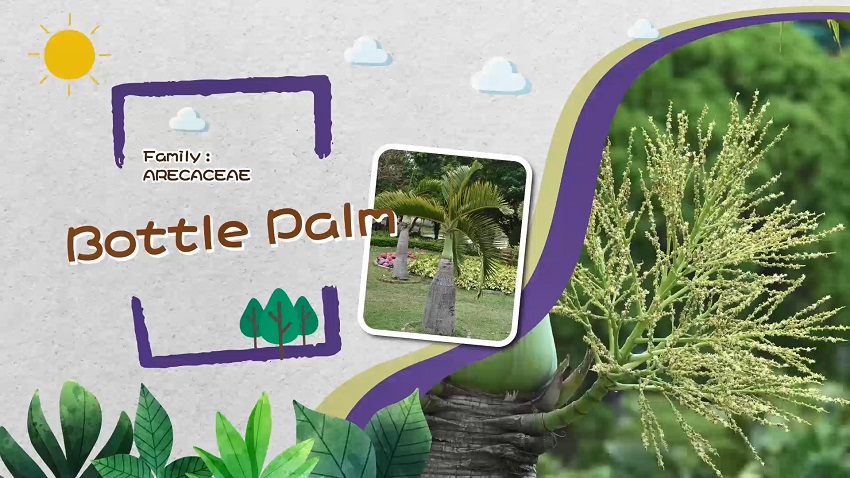| Origins | Endemic to the Round Island of the Republic of Mauritius, which is located in Indian Ocean. |
|---|---|
| Meanings of name | The name of the Bottle Palm is self-explanatory. Its main stem is shaped like a wine bottle, which is why the species epithet “lagenicaulis” is composed of the two Greek words “lagen (bottle)” and “caulis (stem)”. In its native range, its fruits were used as pig feed, which explains the genus name “Hyophorbe”, a composite of the Greek words “hyo (pig)” and “phorbe (feed)”. |
| Applications | The species possesses rich aesthetic value due to its unique silhouette. The slight bulging of the wine-bottle-like stem resembles a human belly, which is delightfully endearing and tempts you to embrace it. It is easy to be cultivated and slightly tolerant to shade and salt, hence it is widely planted in tropical and subtropical regions. However, it grows slowly and is not resistant to frost. |
| Ecology | The Bottle Palm is very commonly seen in Hong Kong. However, do you know it is actually an endangered species? In the 19th century, seeds of the Bottle Palm were being spread and cultivated globally, leading to a great increase in numbers; but at the same time, the native population experienced drastic declines due to aggressive herbivory by invasive alien goats (Capra hircus Linnaeus, 1758) and the European rabbit (Oryctolagus cuniculus Linnaeus, 1758). As a result, the Bottle Palm has been listed as critically endangered (CR) species in the International Union for Conservation of Nature (IUCN) Red List of Threatened Species. Fortunately, the native population was able to recover gradually since the goats and European rabbits were removed by the end of the 19th century. Following the idiom “a watched flower never blooms, but an untended willow grows”, the Bottle Palm has unintentionally flourished as distributed worldwide due to its application as a horticultural plant. Although these actions are not aimed for conservation, they have become a successful example of ex situ conservation. In a study done by the Royal Botanical Gardens, Kew, it is recommended to introduce the seeds of cultivated individuals in situ to increase the genetic diversity of the population. |













